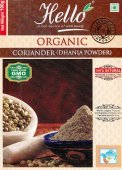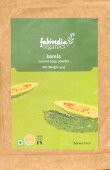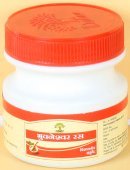Coriander: 1 definition
Introduction:
Coriander means something in biology. If you want to know the exact meaning, history, etymology or English translation of this term then check out the descriptions on this page. Add your comment or reference to a book if you want to contribute to this summary article.
Biology (plants and animals)
Source: Google Books: CRC World Dictionary (Regional names)1) Coriander in English is the name of a plant defined with Coriandrum sativum in various botanical sources. This page contains potential references in Ayurveda, modern medicine, and other folk traditions or local practices It has the synonym Coriandrum majus Gouan (among others).
2) Coriander is also identified with Eryngium foetidum It has the synonym Eryngium antithystericum Rottb. (etc.).
Example references for further research on medicinal uses or toxicity (see latin names for full list):
· Species Plantarum (1753)
· Fl. Bras. (Martius) (1879)
· Field Mus. Nat. Hist., Bot. Ser. (1962)
· Flora Aegyptiaco-Arabica (1775)
· Deutschlands Flora, Abtheilung II, Cryptogamie (Sturm) (1904)
· Les Figures des Plantes et Animaux d'Usage en Medecine (1764)
If you are looking for specific details regarding Coriander, for example side effects, extract dosage, chemical composition, diet and recipes, pregnancy safety, health benefits, have a look at these references.

This sections includes definitions from the five kingdoms of living things: Animals, Plants, Fungi, Protists and Monera. It will include both the official binomial nomenclature (scientific names usually in Latin) as well as regional spellings and variants.
See also (Relevant definitions)
Ends with: Wild coriander.
Full-text (+99): Bhida, Dhaneyaka, Vesavara, Dhaniyaka, Dhanyaka, Kustumbari, Dhanya, Tikshnaphala, Dhaneya, Mahamuni, Vitunnaka, Janapriya, Dhanin, Dhanyavija, Kothimbari, Avarika, Dhana, Tumburi, Shakayogya, Tikshnakalka.
Relevant text
Search found 16 books and stories containing Coriander; (plurals include: Corianders). You can also click to the full overview containing English textual excerpts. Below are direct links for the most relevant articles:
Charaka Samhita (English translation) (by Shree Gulabkunverba Ayurvedic Society)
Chapter 27f - The group of Greens (Harita) < [Sutrasthana (Sutra Sthana) — General Principles]
Chapter 27l - The section on the articles used in cooked foods (Aharayogi) < [Sutrasthana (Sutra Sthana) — General Principles]
Chapter 2d - The man of enhanced virility etc. (pums-jatabala) < [Cikitsasthana (Cikitsa Sthana) — Section on Therapeutics]
Brihat Samhita (by N. Chidambaram Iyer)
Appendix 8 - Glossary of Medical and Botanical terms
Chapter 80 - On Gems (ratna-parīkṣā)
The Matsya Purana (critical study) (by Kushal Kalita)
Part 4.3b - Saubhāgyaśayana-vrata < [Chapter 4 - Religious aspects of the Matsyapurāṇa]
Rasa Jala Nidhi, vol 3: Metals, Gems and other substances (by Bhudeb Mookerjee)
Part 8 - Semi-poison (8): Jayapala (croton seeds) < [Chapter XXXI - Upavisha (semi-poisons)]
Cosmetics, Costumes and Ornaments in Ancient India (by Remadevi. O.)
1.2. Materials (b): Pearl < [Chapter 3 - Ornaments]
2.12. Pharmaceutical use of Perfumes < [Chapter 1 - Cosmetics]
Related products
(+2 more products available)





